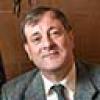Human beings cannot stop thinking and talking about God, science and faith. We are naturally drawn to religious questions and intuitions. That is why the rationalist sectarians who feel threatened by the persistence of the divine try to have it excluded from the public domain as 'irrational'. But we are meant to ask these questions just as much as we are meant to eat and drink to survive, or to be attracted to other humans to reproduce. That is what our identity and well-being as human beings requires. These conversations must be allowed to happen! To ask these questions and seek for answers is an integral part of being human.
The idea that an interest in questions of faith is something imposed on human beings by religious institutions or authorities is a social construction of the 'Age of Reason', anxious to portray itself as an intellectual liberator and distract our attention from its notoriously impoverished notion of 'rationality'. But science has moved on, and we now know that religion comes naturally to us - sometimes in the form of a fascination with the 'transcendent', sometimes through a sense of presence or agency, sometimes through a sense of something ultimate beyond the realm of reason and experience, and sometimes through an awareness of our place within a deeper order of things. That is why we cannot stop talking about ultimate questions- such as God and the meaning of life. We seem to be meant to ask such questions.
Science and faith are not the only voices in today's culture that need to be taken seriously. They are, however, widely regarded as two of the most important - if not the most important - movements in our world. This book represents a plea for dialogue, opening the door to an enriched vision of reality. There are some within both the religious and scientific communities who would resist this move, fearing intellectual contamination or loss of focus, or who persist in believing that science and faith are locked in some kind of eternal warfare. We have moved beyond these outdated isolationist ideologies, which are now known to rest on highly questionable foundations. There are clearly boundary issues that need to be negotiated in this most rewarding and creative conversation. But that is true of any relationship worth having in the first place. A 'significant other' often sparks off lines of thought, moments of insight and challenges to settled ideas that may be initially threatening, but so often lead to new and richer ways of seeing things.
C.S. Lewis once argued that the task of a creative writer was to point away from herself to what she had discovered, in the hope of encouraging others to make that same discovery. In this book, I have set out something of my own personal journey from a sense of rapturous amazement at nature to discovering initially the intellectual delight of the natural sciences, then the elevating and enriching experience of religious faith, and finally the exploration of the richer vision of reality that resulted from allowing science and faith to inform and illuminate each other. My own journey is not normative. It does not define the way in which this engagement must take place. It simply illustrates the possibilities opened up by this principled and respectful interweaving of narratives, which allows the reconnection of the otherwise fragmented aspects of our worlds of meaning.
My task in this book is not to provide a defence of either science or Christianity, but to explore what happens when they are allowed to speak to each other, quietly and respectfully, disregarding the predictable outrage of those tiresome and small-minded guardians of a spurious cultural purity who feel threatened by this discussion and want to close it down before it even gets under way. This book can be seen as both an argument for the interweaving of a scientific and a Christian narrative and an exploration of the issues and possibilities that emerge when this is done, mapping out the intellectual landscape that is opened up when things are seen in this way. And let me emphasise again that there is no question of turning science into religion, or religion into science. Science is science; religion is religion. All that I am proposing is that they talk to each other, seriously and respectfully, and reflect on the more richly textured way of seeing things which results from this.
Now of course there are many important questions which need to be discussed in any such conversation about interweaving narratives, some of which I have hinted at in this book. But I have painted this picture with broad strokes, hoping to appeal to my readers' imagination as well as to their reason, leaving the finer brushwork to heavily annotated and probably rather dull monographs. And in one sense I have said nothing new, in that such a narrative of enrichment was the common currency of earlier ages. Yet this older narrative has been displaced by a narrative of conflict, which assumed cultural dominance for reasons of historical contingency and has sustained that cultural dominance largely through ignorance of the work of a new generation of historians. It is time to move on - or perhaps to look back, and reappropriate and expand what can now be seen to be a wiser and more reflective approach that weaves together science and faith into a deeply satisfying way of seeing our world and grasping our possibilities within it.
Inventing the universe: why we can't stop talking about science, faith and God (London: Hodder & Stoughton, 2015, pp. 183-186).
